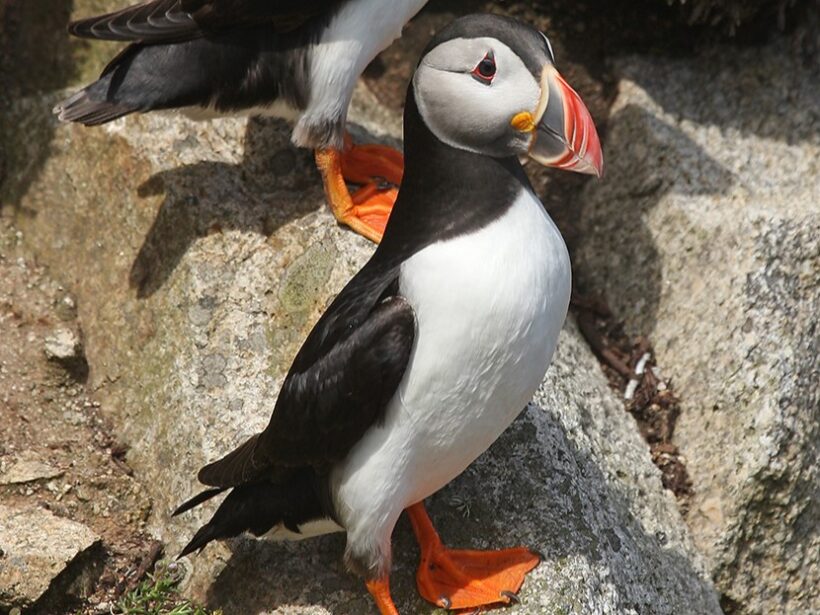Fratercula arctica
![]()
![]()
A cousin of the penguin and guillemot, the puffin is also known as the “sea parrot” for its colorful beak. The species is present in France on the Sept-îles archipelago, which, after a sharp decline, now has just 200 breeding pairs. Puffins nest in burrows on the edge of cliffs and lay only one egg. Puffins generally fly low over the water, flapping their wings rapidly, or drift in the current and dive to catch any fish they come across. In winter, the Atlantic puffin is widely distributed along the French coast. The species is coastal during breeding, moving no more than a few dozen kilometers from its nest, and more pelagic in winter. Puffins are often seen close to the coast during storms and are victims of oil spills.
The species is in global decline, and there is very little data on its distribution at sea, particularly for breeding.
In the Sept-Iles National Nature Reserve, puffins nest on the edge of steep, hard-to-reach cliffs. It is also a sensitive species in sharp decline. To avoid disturbing the individuals on their nests, we capture individuals resting at sea or on rocky islets at the edge of the colonies.
A few overwintering individuals brought to care centers, often after winter storms, may also be fitted with GPS before being released.
The puffins are equipped with OT9-D GPS beacons, which are specially adapted for dives, recording pressure and depth. These small 10g beacons transmit data regularly via 3G and are attached to the feathers on the bird’s lower back with special tape. The beacons fall off after a few weeks or months as the tape wears down or the feathers moult.
![]() Migratory in France
Migratory in France
![]() Breeder in France
Breeder in France
![]() : Wintering in France
: Wintering in France

